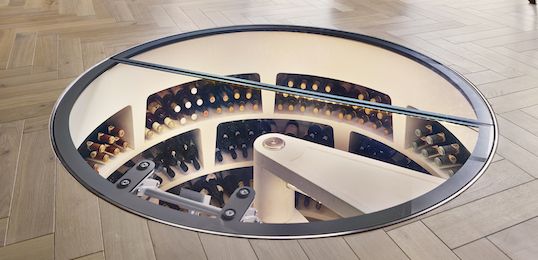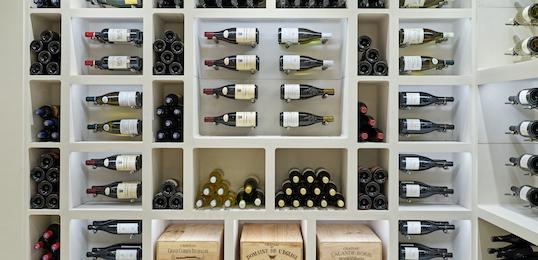Decanting is the process of getting the clear wine off the sediment and is one of the most important processes for enjoying old wine. As wine ages, especially full-bodied red wines, they throw off sediment. Some is in the form of large, solid, tartrate crystals, some is complexed tannin and other phenolic compounds, some is simply tiny particles of setritus and some will form a residue on the side of the bottle that was on the bottom when it lay horizontal for its aging period, or encrust the cork. If you simply pull the cork from a bottle of old wine that has thrown off a lot of sediment, the first glass may be clear, but when you set the bottle down, the wine inside may slosh and stir up the sediment and your next pours will be unacceptably cloudy.
When decanting first stand the bottle upright for a day before you plan to open it. Secondly withdraw the cork very carefully, without shaking the bottle. Whether it’s true or not, think of the bottom inch of the bottle as containing very fine sludge that will billow up in clouds of sediment if you slosh the wine, then handle it that way. With older bottles of wine, you must take great care to ensure the cork does not crumble as you withdraw it. Make sure the corkscrew is screwed to the bottom of the cork, if it still begins to crumble use an ‘ah-so’, it has two prongs, one longer than the other, to be inserted along both sides of the cork. This usually always works but if on the rare occasion it does not work, possibly due to the cork being so old that it insists on crumbling away, simply push the cork into the bottle and strain the wine through a fine strainer.
People decant wine in a variety of ways but light is an always an important aspect to getting it right. The light is a necessity when watching the wine being poured. Some hold the bottle and the decanter over their heads so that the lights shines through the bottle, others use a flash light set upright, placing the decanter on one side of the light and then let the light shine through the neck and shoulder of the bottle as the wine is gently poured from the bottle. It has been argued that the flame from candle light provides the best view of wine as its poured. Which ever method you choose, gently tilt the neck downward, clear wine will pour off into the decanter. Don’t tilt the neck back up during the decanting process or the wine will slosh back into the bottle and stir up the sediment. Pour the wine in a slow, steady and gentle pour. Eventually a dark river of sediment will start inching up toward the neck. Keep pouring off the clear wine until the sediment is just about to flow through the neck. Then tilt the neck up and set the bottle aside. It may have an inch or two of wine left in the bottom but these dregs are not salvageable and will remain sludgy, best to throw them away and enjoy the decanted wine.
The remains of the decanted bottle of wine can be poured back into the original bottle once it has been fully rinsed and drained. Use a filter to make the transfer and insert a stopper. The easiest stopper is the original cork; insert it upside down. You can, alternatively, take a more decorative approach and find many beautifully crafted bottle stoppers online and in catalogues. You can also leave the wine in the decanter. Decanters are often crystal and come with a crystal stopper to match, others take the form of different shapes. Traditional French decanters are duck shaped, another is the captain’s decanter, designed to keep the wine in the canter when aboard a swashing ship.
A glass filter is excellent for tool when decanting wine because glass is completely inert and cannot impart anything into the wine unlike metal and plastic. They are designed specifically for decanting wine and have a spout to direct the flow of the wine towards the side of the decanter; minimising aeration.


